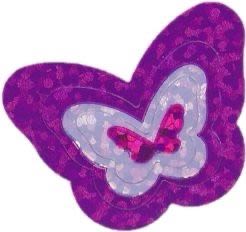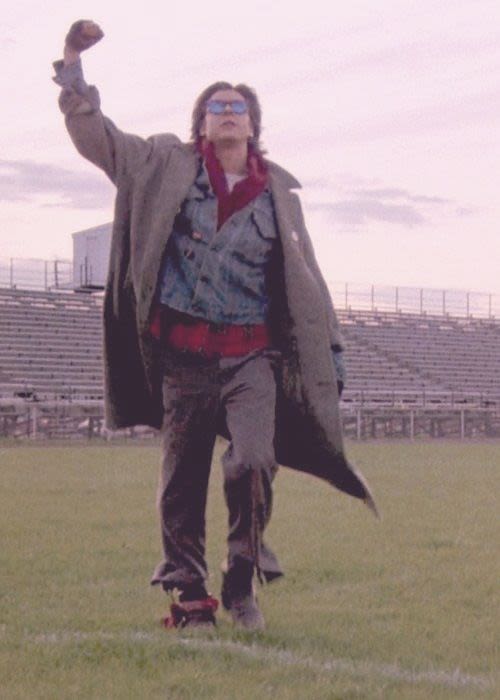The Evolution of the Coming of Age Film

PREFACE
The coming-of-age genre has always been something that comes across as gendered, particularly geared towards women, but a notable trend in these films we have selected is that they always have a strange interest in the male gaze, regardless of the target gender, which for films directed at women doesn't make sense. Thankfully, this trend is notably going away, unless the male gaze is being used to portray a narrative purpose.

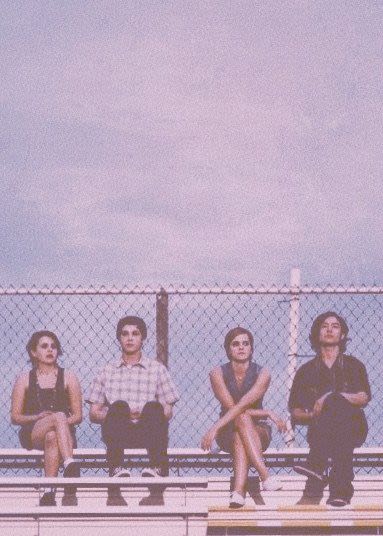
MSMOJO Evolutions of the coming of age genre


‘Grease’ was released in the mid 70's but reflects gender norms from the 1950s by idealising traditional roles. Grease centres on relationships with men, such as Sandy changing herself to gain Danny's love, highlighting the idea that a woman's value is often tied to male acceptance. Based in high school, Sandy is faced with difficult interactions, relationships, and must navigate through misunderstandings, jealousy, and societal pressures, also encountering confusing stages of growing into a women. Encountering first love, relationships, puberty, connections and friendship. Sandy is viewed in the construction of the gaze, seen as the 'ideal woman' during this period. A white, pure, soft-spoken woman who has moved to a different city and finds a familiar face at her new school who also happens to be a love interest. The gaze that Sandy is placed under is obvious to appeal to those who fetish a younger acting woman; she is innocent compared to others in the film, placing her on a pedestal. Sandy is always lit in a very soft and bright light usually in mid to wide shots, only seeing a close-up pan of her body when she makes her transformation to conform to a type that she feels Danny desires. ‘Grease’ explores the struggles of teenage years, where conforming to societal norms clashes with the pursuit of love and personal identity, all within the constraints of societal expectations and gender roles.
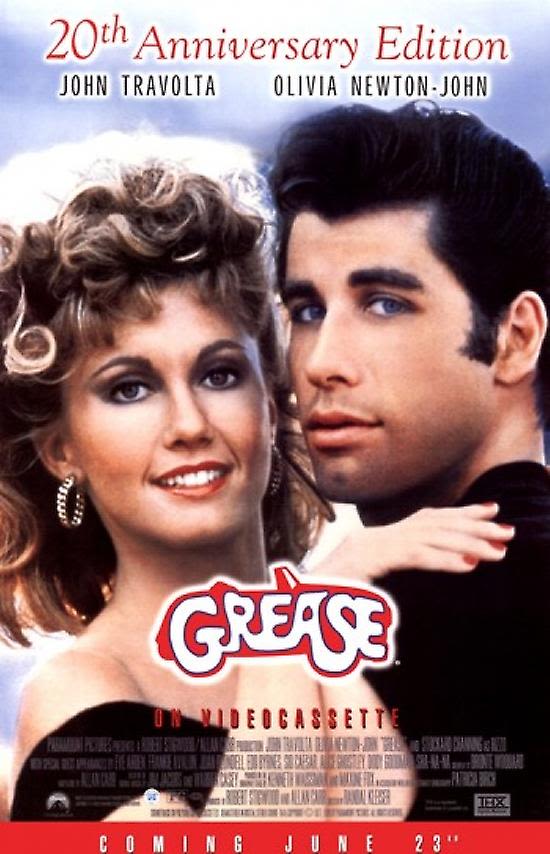
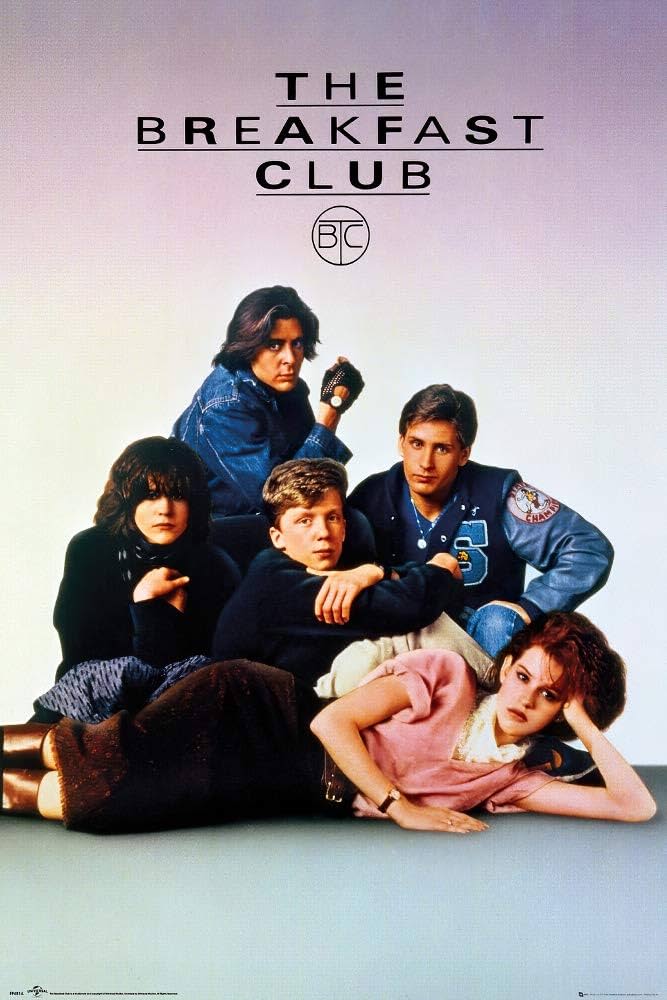

‘The Breakfast Club’ emphasises the traditional depiction of gender roles in coming-of-age movies. In the film, there is significance placed on the five different social groups. These include the jock, the rebel, the princess, the freak and the nerd. All being placed in Saturday detention together. The film illustrates the judgements, pressures, and then the friendships made through the group as they find that their differences make them more alike than once thought. In The Breakfast Club, the characters are faced with personal challenges, ignorant adults, and discover that looks can be misleading. Although individuals in schools are often stereotyped, they 'breakfast club' discover's shared interests and gain valuable insights from each other that promotes personal development. This establishes the movie as a timeless representation of the complexity of youth.

Clueless can be seen as one of the least relatable coming-of-age stories. A rich, white girl being faced with the struggles that come with being a 'rich white girl'. She finds herself in distress when everything she finds stable and in her controlstarts to change. She finds no fulfilment in her wealth, attempting to improve herself internally and becomes a more relatable character. It provides an insightful perspective on growing up and challenging stereotypes. However, her life revolves around love, a common theme in teen movies from the 1990s. Cher moves through social ranking, showing compassion for those on the outskirts. The story, seen through a woman's eyes, highlights inner development more than just surface-level popularity. Cher transitioned from being self-centred to becoming more selfless, nurturing female relationships and empowerment. The film purposely avoids the male perspective, instead highlighting the experiences of women. Cher's recognition and support of her crush's sexual orientation demonstrate her personal development and compassion and she realise's she dosen't know everything, and nothing will ever always be controllable.
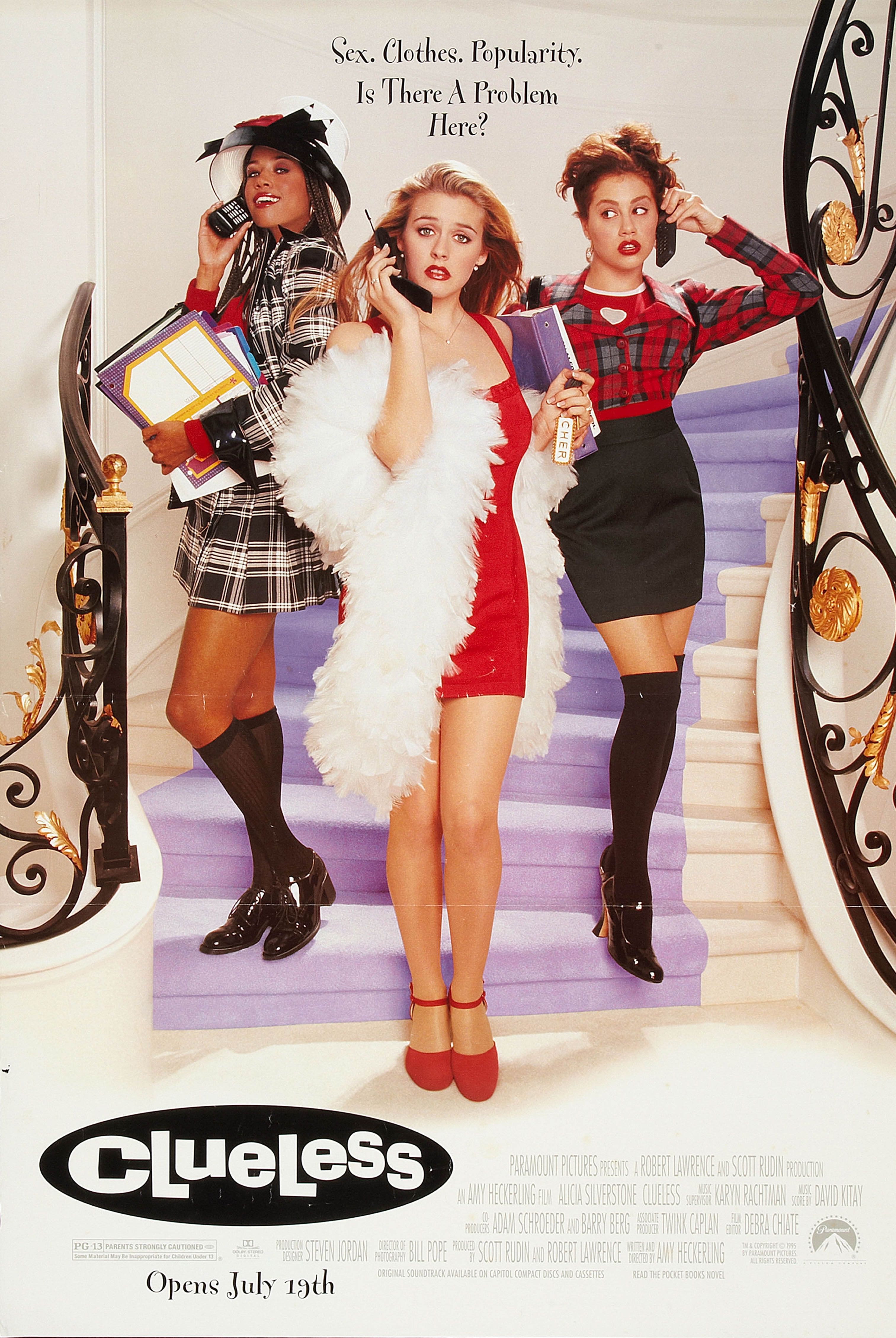
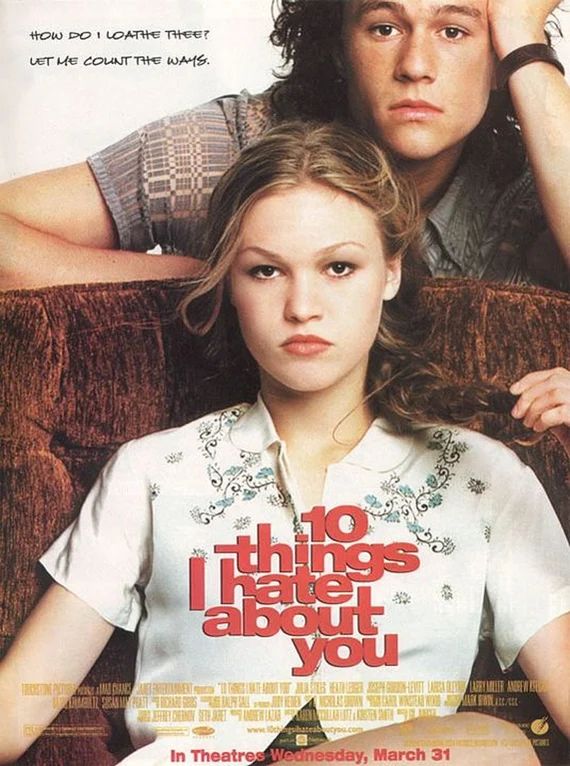
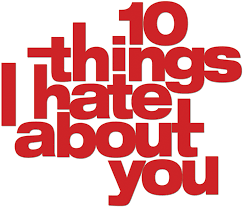
‘10 things I hate about you’ acts as a textbook representation of the 90s concepts of gender presentation. With masculine character like Kat being multidimensional, as she holds a sterytypically strong 'male attitude' (harsh, bold, unafraid) but thinks like a 'female character' (caring, helpful, organised), and you can see both of these visibly throughout the film. Whilst the Tomboy representation comes across as quite progressive, there is still a Quasi-Homosexual or 'gender swap' happening, with Patrick and Kat both acting with little but deep down strong emotion, which was popular in most 90s media. Any portrayal of emotion was seen as being a sort of layered and disguised homosexuality, or femininity. For Patrick this comes through in the scene where he sings to Kat, and when he looks after her whilst she is concussed. Despite the quasi-homosexuality in parts of the film, Kat does undertake a minor feminisation, especially towards the end of the film.
All in all, the film shows progression in a modern context, whilst it doesn’t serve as a negative instance, it isn’t a great representation of gender dynamics.

‘Mean Girls’ set in a high school setting, zoning into social groups and conventional gender expectations. Criticising female conflict and cultural demands. However, it also reinforces traditional notions of femininity, linking personal development to love and societal standing. Cady, a new student in school has moved from Africa, after been homeschooled her whole life. Her adjustment to being the new kid at school emphasises the challenges of social status and adapting to a new environment, coming from homeschooling to high school and changing herself to fit friendships and to overall fit in. Damian (to gay to function) is depicted in the film as overally gay, with his character going along with the usual expectations of 'gay men', Damian’s friend Janice is alternative compared to the 'normal' school girls and mocked, this mainly comes from accusations that she is lesbian, and she gets villanised harshly for this. Representing queerness in the film Janice and Damien ( the gay duo), these characters do not integrate into the school's groups, ‘othering’ queerness in the film. While he was hurt by disrespectful remarks, Damien's confidence and stories are unlike the usual from 'gays' in high school. ‘Mean Girls’ explores the hardship of teenage years' expectations and stereotypes, providing an understanding of conforming to pressures and personal identity.
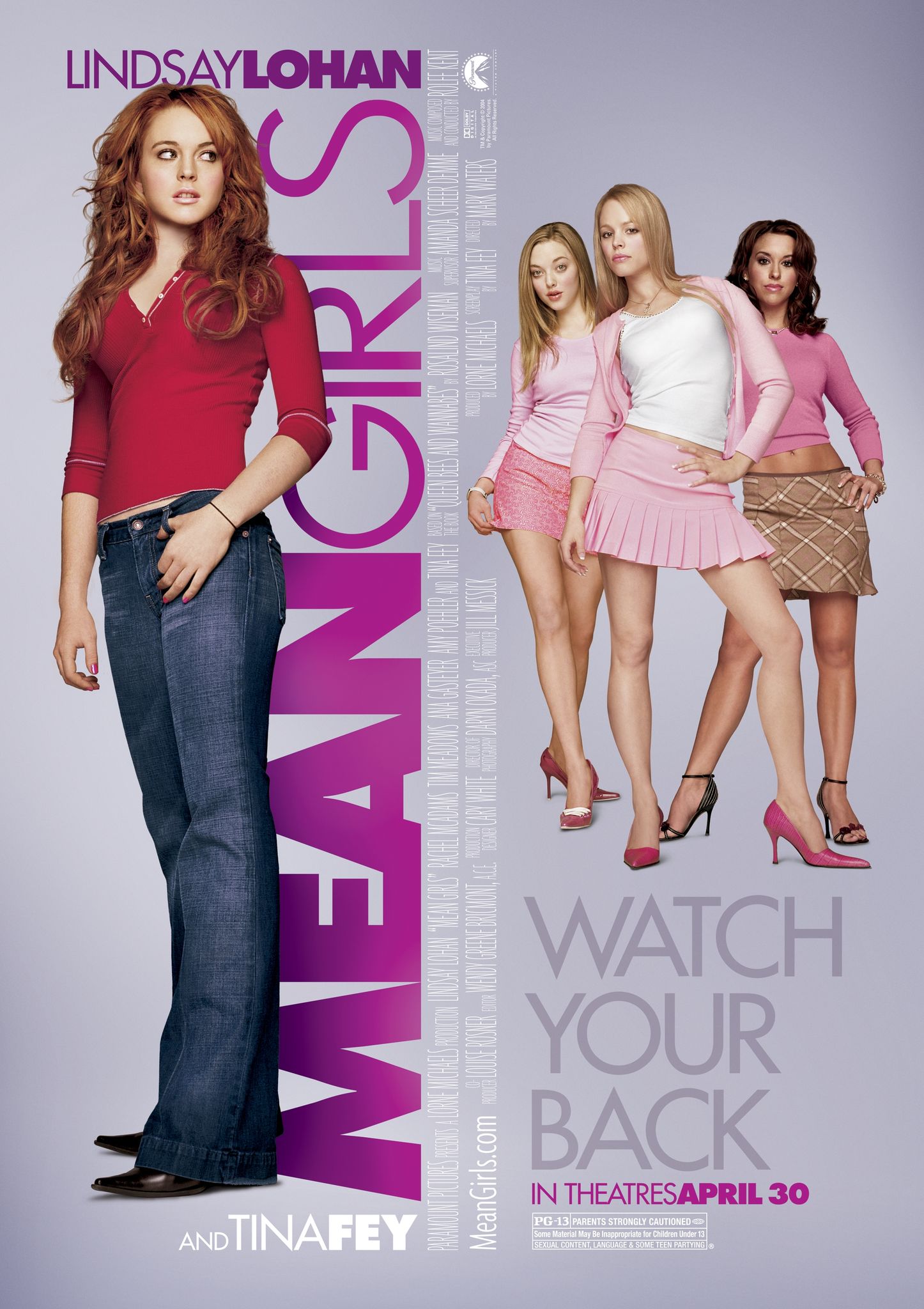
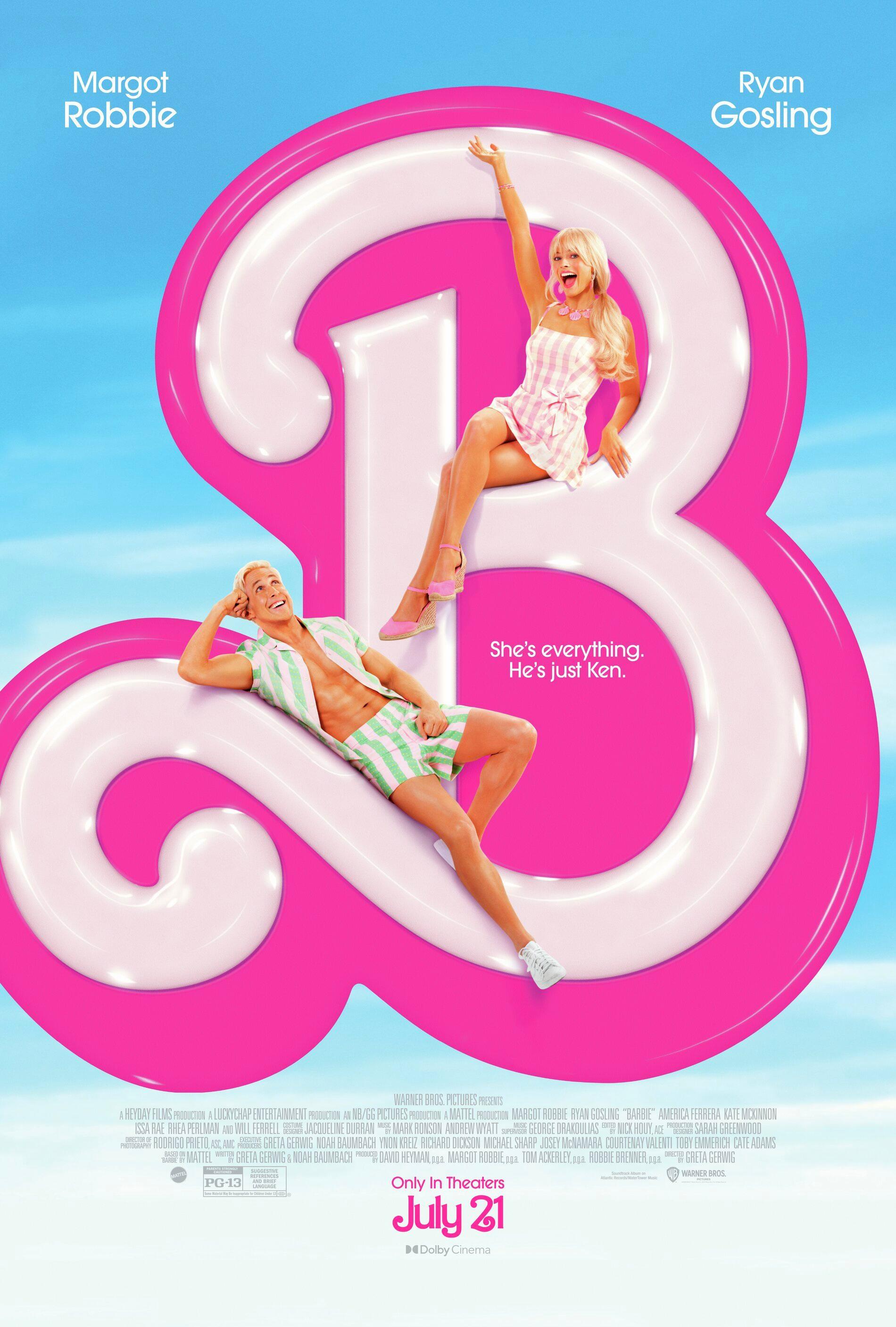
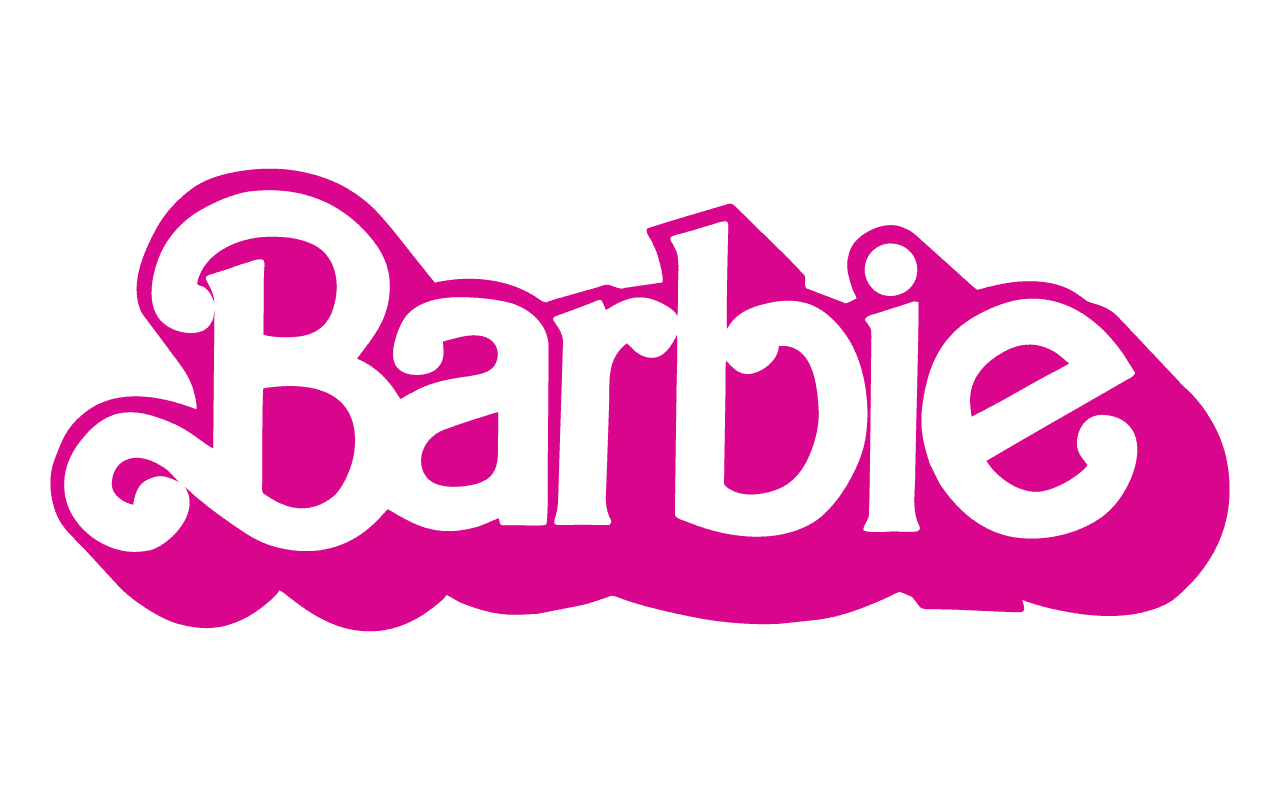
‘Barbie’ represents a shift towards uplifting stories for young girls, centring on Barbie's personal growth and empowerment journey. Friendship, ambition, and celebrating individuality are key themes, moving away from previous depictions of femininity centred on approval from men. There are obvious gender discussions in this film with the main theme being gendered differences and expressions. Between Ken and Barbie and the overtaking of ‘Barbie land’ to ‘kendom’. This can be represented as a coming-of-age film as we had Barbie growing up, making it a coming-of-age film for all demographics with Barbie from her creation in 1959 to now. Having a personified Barbie on screen compared to her as a product allows discourse around women by the most iconised women made. Viewers connect with Barbie's understanding that flaws do not equal weakness, as characters challenge, cultural norms and grow up while on their journeys. ‘Barbie’ promotes autonomy and empowerment, presenting a new perspective on being a woman and loving oneself, inspiring young viewers to accept their unique qualities.
BASICGORL EXPANSIVE VIDEO ON LACK OF POC IN THE COMING OF AGE GENRE

ANALYSIS

MALE GAZE
The concept of the "male gaze," originating from Laura Mulvey's influential essay "Visual Pleasure and Narrative Cinema" in 1975, sheds light on how mainstream cinema predominantly depicts female characters from a perspective that caters to the desires and fantasies of heterosexual men. This phenomenon persists across various genres and target audiences, shaping the portrayal of gender on screen. The male gaze not only objectifies women's bodies but also dictates societal norms and expectations regarding female sexuality and behaviour. It perpetuates idealised images of femininity and reinforces gender roles, positioning women as objects to be observed and controlled by men. Male gaze shots, such as medium close-ups of women from over a man's shoulder or close-ups focusing on specific body parts, exemplify this dynamic, with men depicted as active observers and women as passive objects. This pervasive influence extends beyond the realm of cinema, impacting women's everyday lives and influencing how they perceive and express their sexuality.

FEMALE GAZE
In examining the portrayal of gender in coming-of-age films, particularly through the lens of the male gaze theory and its contrast, the "female gaze," we uncover layers of representation and empowerment that intersect with broader societal shifts. Traditionally, films have often depicted women through the male gaze, objectifying them and framing their narratives in ways that cater to male desire and fantasies. This perspective influences everything from camera angles to lighting and narrative structure, often showing female characters in two-dimensional roles and reinforcing gender stereotypes. Despite this, contemporary coming-of-age films are increasingly challenging these norms and embracing a more inclusive and diverse approach to gender representation. For instance, movies like "Clueless" and "Barbie" offer refreshing perspectives by centering on female empowerment and personal growth, diverging from traditional narratives that prioritise male validation. They emphasise's themes of friendship, ambition, and self-discovery, highlighting the complexities of female identity beyond societal expectations. Intersectionality acknowledges that individuals experience, multiple forms of oppression or privilege simultaneously, shaping their experiences and opportunities. In the context of coming-of-age films, intersectionality prompts discussions about the portrayal of diverse experiences and perspectives, moving beyond simplistic representations of gender to explore the realities faced by individuals with intersecting identities.
By critically examining the influence of theories like the male gaze and feminist perspectives on gender representation in film, we can better understand how these narratives both reflect and influence societal attitudes towards gender. Moreover, embracing the "female gaze" and promoting intersectional narratives, contemporary coming-of-age films have the potential to challenge stereotypes, empower diverse voices, and foster greater inclusivity in storytelling.

HOW WOMEN ARE VIEWED
Lighting and framing of female characters in traditional films often serve to enhance their physical attractiveness while minimising their complexity. Women are frequently lit to appear smooth and flawless, lacking the depth afforded to male characters. This reinforces the two-dimensional portrayal of women as passive objects to be looked at, rather than active participants in their own narratives. Female characters are often relegated to secondary or submissive roles, serving primarily as love interests or supporting figures to the male protagonist. This reinforces traditional gender roles and power dynamics, further perpetuating the notion of women as objects to be observed and desired by men.
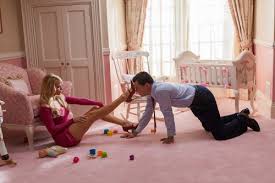
In contrast, the concept of the "female gaze" offers an alternative perspective that challenges these traditional norms. The female gaze prioritises the perspectives and experiences of women, presenting characters and narratives that reflect their desires, struggles, and agency. This may involve depicting women as complex individuals with their motivations and desires, rather than simply as objects of male desire. By offering audiences alternative perspectives and narratives that prioritise female empowerment and agency, these films contribute to a more inclusive understanding of gender in cinema.
In film, the portrayal of women has historically been shaped by the male gaze. This concept refers to the way in which the camera and narrative perspective in film are structured to cater to male desires and fantasies, often objectifying women and framing their characters in ways that prioritise their physical appearance and sexual allure. Elements such as body shots, minimal costumes paired with intense makeup, and camera angles that emphasise certain body parts contribute to the sexualisation of female characters, reinforcing traditional gender stereotypes, and catering to the male viewer's gaze.
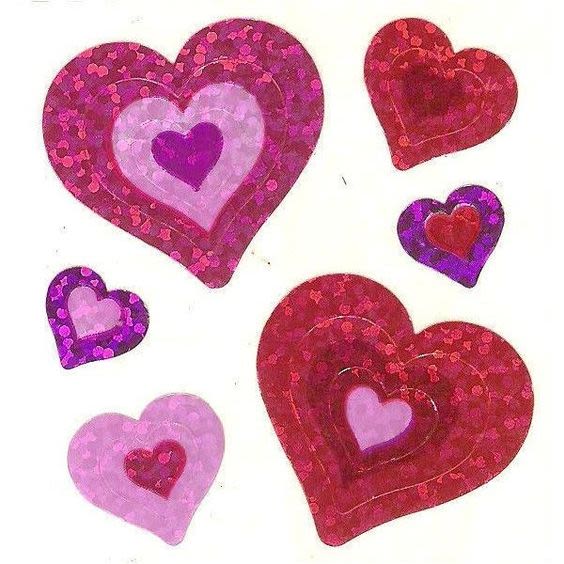
CONCLUSION
The evolution of coming-of-age films mirrors societal shifts in gender perceptions. Classic movies like "Grease" and "Breakfast Club" upheld traditional roles, but newer films like "Clueless" and "10 Things I Hate About You" challenge stereotypes and embrace diversity. Despite progress, the male gaze persists, shaping women's portrayal and reinforcing femininity norms. Feminist film theory and the female gaze offer alternative views, sparking discussions on representation. Intersectionality highlights gender's ties to other identities. Contemporary films have the power to challenge stereotypes, empower diverse voices, and promote inclusivity, shaping our understanding of gender. Further evolutions are yet to come as the hegemonic representation of white women is in dire need of being filtered out. Coming of age is a significant genre as it can help the viewers navigate their own experience but there needs to be further representation of the people watching and needs to be translated on screen.
